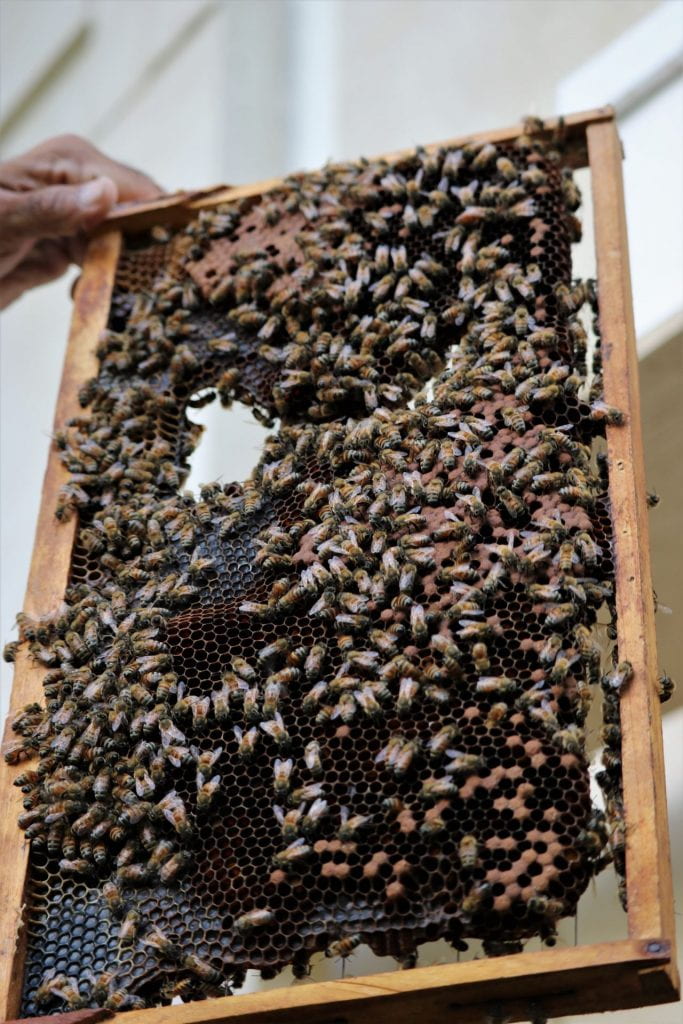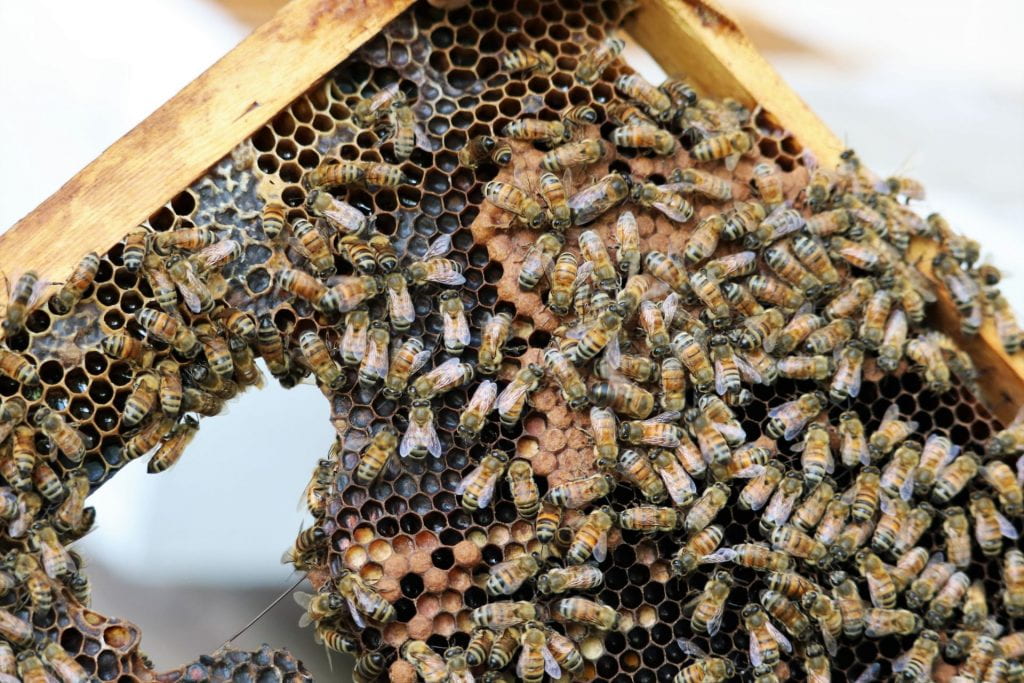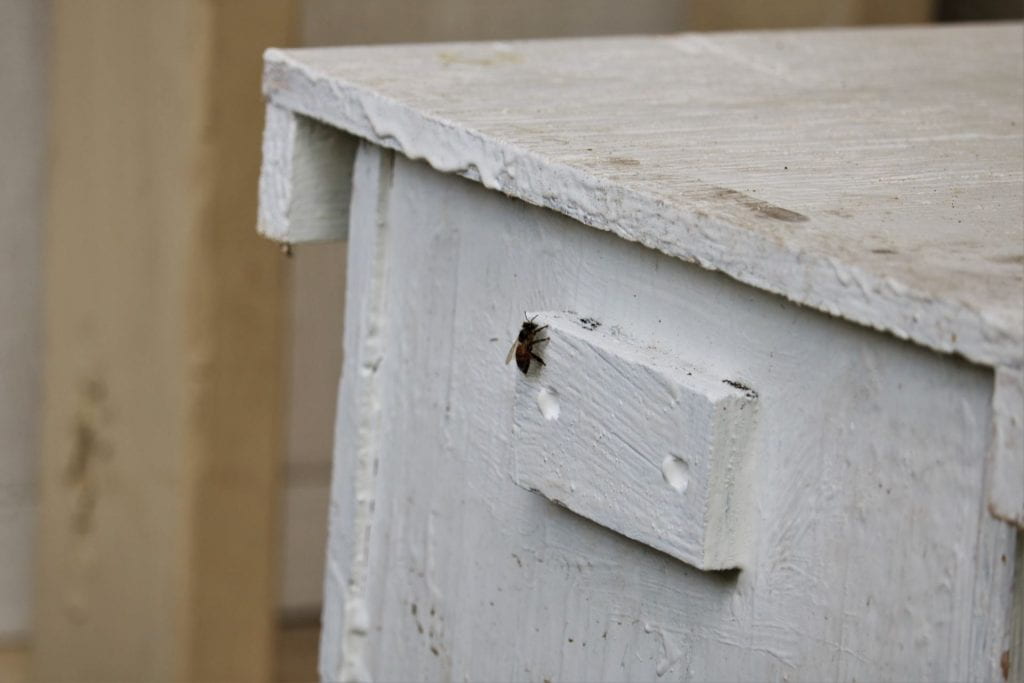Student Media staff members Madelyn Rinka and Erin Cowan visited NSU’s apiary to speak with Venkatesh Shanbhag, a professor in the department of chemistry and physics. Shanbhag oversees the apiary and helps the honeybee population on campus by moving colonies that would otherwise be exterminated to rescue boxes.
“Save the bees.” The phrase that has been printed on t-shirts, etched into the covers of notebooks and ornately designed in social media posts more and more frequently, but what’s the whole story behind these — no pun intended — buzzwords?
Honeybee populations are on the decline, an emergency scientists around the globe are working to address. Their communities have a crucial role in the ecosystem and their absence would have an insurmountable impact on our environment.
“They’ve been suffering and in decline for decades… but it’s been on the radar, publicly, relatively recently. There’s this notion of colony collapse disorder. What’s happening is it appears that they’re succumbing to a virus — the deformed wing virus. It’s a virus that they’ve co-evolved with for quite some time, but relatively recently, again in the last few decades, they seem to be more vulnerable. Almost as if the common cold started killing people left and right — that’s kind of what’s happening with them,” said Omar Tonsi Eldakar, assistant professor in the department of biological sciences.
Bees that contract the deformed wing virus not only, as the name would imply, have deformed wings, but their navigational abilities are impacted as well, which results in honeybees leaving the hive and being unable to orient themselves back to the colony, explained Eldakar. The virus is typically carried within colonies by varroa mites, a parasitic species of mite that lives sympatrically with the honeybees.

However, bee populations have coevolved with the deformed wing virus and the balance has only shifted out of the bees’ favor more recently as they begin to succumb to the virus. But why now?
According to the USDA’s Agricultural Research Service, a variety of factors, including “parasites and pests, pathogens, poor nutrition and sublethal exposure to pesticides,” are overlapping to threaten honeybee populations, making solving the issue complicated.
“It turns out, it’s not the deformed wing virus on its own. It’s actually certain types of pesticides that have deleterious effects on the immune system of these bees. These pesticides, called neonicotinoids, will have a negative consequence to the bees’ immune system. So now, the bees can’t fight off the virus. It’s not that the virus is becoming more prevalent or that the varroa mites are becoming more prevalent, it’s that the bees are more vulnerable to the virus because these neonicotinoids are essentially tipping the scales of this relationship in favor of the virus,” said Eldakar.
As honeybee populations decline, so do the fitness of the plant communities. According to the United Nations, almost 90% of global wild flowering plant species are at least in-part dependent on pollination from animals. With plants at the root of our food webs, a disruption in their reproductive process has numerous impacts on the stability of our ecosystems.
“A lot of plants require engaging pollinators to do the [reproduction] job for them… Some of these species are very specific as to which pollinators they’ll actually use and honeybees serve that role quite a bit in a lot of crops that are important for us,” said Eldakar.
There are things individuals can do to support honeybee populations and protect our ecosystem. First, listen to science and do research on neonicotinoids-containing pesticides that harm bees’ immune systems. Fighting the large-scale issue at the root can prevent problems from arising in the first place.
From a more individual perspective, hosting colonies of bees in urban and residential environments, when possible and practical, can benefit the species as well — we just need to address the collective fear of honeybees and the preconceived assumption that they want to hurt us. It’s crucial to remember that honeybees don’t usually want to sting — doing so harms themselves. If they’re stinging, it’s to defend something, such as their colony.
“How do we educate people? It’s a very big mission… but it has to start with ‘quit being scared,’” said Shanbhag.
For the entire multimedia story about the threats bee populations are facing, visit nsucurrent.nova.edu.
Those interested in learning more about the apiary at NSU can reach out to Shanbhag at shanbhag@nova.edu.






